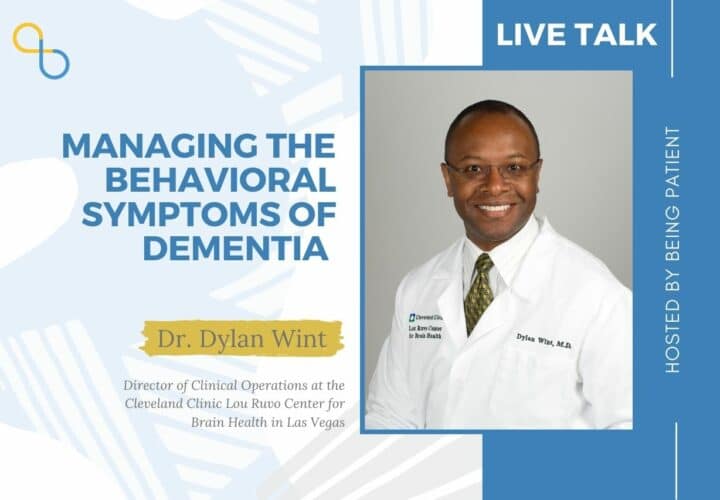The likelihood of an aging American dying of an opioid overdose is 10 times higher than it was in 1999, a new study shows. Cognitive decline can exacerbate risk.
The opioid crisis has long plagued the U.S. An estimated 136 Americans will die each day from overdosing on opioids, an alarming figure that is on the rise. This class of highly addictive drugs include illicit opioids like heroin and medically prescribed pain relievers such as morphine. Roughly one in four patients prescribed with opioids for chronic pain struggle with misuse of these drugs, and roughly one in 20 of those who misuse prescribed opioids move onto heroin. Experts say opioid overdose is a killer across all age groups, including a population that is often overlooked in America’s opioid crisis: people entering old age.
A recent study published in JAMA Network Open found that, over the past two decades, the number of opioid overdose deaths in people aged 55 or older increased by nearly 20 times — from 518 fatalities in 1999 to 10,292 deaths in 2019. Analyzing data from the Centers for Disease Control and Prevention, the researchers looked closely at population increase and this rise in opioid deaths, determining that, among U.S. residents aged 55 or older, the annual rate of opioid overdose deaths rose about tenfold between 1999 and 2019, from 0.9 fatalities per 100,000 people to 10.7 deaths per 100,000 people.
The researchers say these findings challenge an assumption held among both the general public and health care providers: that aging adults are less affected than other demographics by substance misuse.
“We have stereotypes about who is misusing opioids,” Lori Ann Post, the study’s senior author, told Being Patient. “I think what comes to mind is young, white men in rural West Virginia, Kentucky, Pennsylvania kind of [areas]. But we wanted to point out, it’s not just that particular demographic [who are affected], and we found, in fact, that there’s this massive increase in opioid overdose deaths among older adults.”
Post, a professor of geriatric medicine, emergency medicine and medical social science at Northwestern University’s Feinberg School of Medicine, added the study’s main takeaway for health care providers is to screen all patient for opioid use disorder “We have a crisis going on,” she said. “It’s escalating exponentially in America.”
What leads to dependency on opioids and overdose?
According to the researchers, a range of factors can put older adults at risk of opioid use disorder, which may in turn, contribute to fatal overdoses.
For instance, the team wrote, this population is more likely to have chronic conditions like cancer and arthritis, illnesses that may require opioid prescriptions.
According to the study’s lead author Maryann Mason, an associate professor of emergency medicine at the Northwestern University’s Feinberg School of Medicine, older adults’ higher risk for comorbidities makes it more likely for them to be prescribed multiple drugs. This in turn can lead to adverse drug interactions. Further, people’s ability to metabolize drugs such as opioids diminishes with age, increasing the risk of side effects like problems with breathing, she explained.
“Their bodies metabolize things differently as they age,” Mason said of older adults. “They don’t do as well at metabolizing drugs like opioids, so they could have increased incidence of respiratory suppression.”
Compounding the problem is the fact that cognitive decline can hinder people’s ability to take opioids as prescribed, Mason added. “Aging actually can lead to opioid misuse, like forgetting to take a dose, double taking a dose and things like that,” she said.
At the same time, however, she noted that opioid misuse can mimic signs of aging, potentially leading to a misdiagnosis.
Beyond a decline in cognitive abilities, traumatic experiences like the death of a loved one, social isolation and depression — all of which are risk factors of substance use disorder — could play a role in opioid overdose fatalities among older adults, the researchers noted. But, trends in recreational use of substances from past research may be part of the picture, too.
“The current generation of older adults — a.k.a. the baby boomers — have continued to use drugs recreationally at higher rates than previous generations,” Mason said. “So they’re also more exposed to non-regulated drugs than we’ve seen in the past.”
Racial disparity in opioid overdose deaths
When it comes to racial differences in opioid overdose deaths, the recent study underscores a disturbing pattern.
Since 2013, Black American men aged 55 or older had been hit hardest by opioid overdose fatalities, and by 2019, their death rate was 40.03 per 100,000 people — almost four times higher than people of the same age overall.
The researchers suggested that the rise of illicit fentanyl, a highly potent synthetic opioid, in the drug supply may be one factor behind the racial disparity in opioid overdose deaths; further, not only are African Americans less likely to have access to quality health care, but they are also at higher risk of experiencing trauma and becoming a victim of crime, possible reasons that underlie this disparity.
Aside from universal screening of substance use disorder, Mason said targeted outreach with trusted individuals in the Black community may help connect people to treatment more effectively. She added that accommodating older adults’ mobility issues, and hearing and vision impairments, could make treatment more accessible. But stigma around substance use disorders, including opioid use disorder, remains a major problem, and Post said addressing this stigma is critical to helping older adults seek help from health care providers.
“We have to not blame victims for their own addictions,” she said. “Nobody wants to be addicted to any substance. We need to destigmatize opioid use disorder or other types of substance use disorders so that people feel like they can go and talk to a doctor.”



